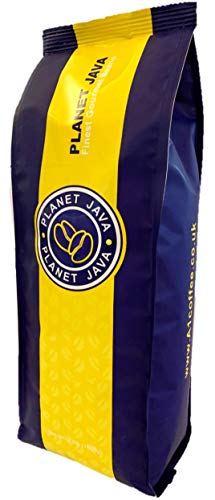Why Nobody Cares About Coffee Beans Types

Coffee Bean Types: Arabica, Robusta, Liberica, and Excelsa
If you're a coffee lover you're probably aware that different types of beans produce varying flavor profiles. Learn more about four of the most well-known varieties: Arabica, Robusta, Liberica and Excelsa.
Excelsa beans, a variety of Liberica which is grown exclusively in Southeast Asia. They have a fruitier and tarter taste profile, and are often used in blends of coffee to add depth.
Arabica
Arabica coffee beans account for 75% of global production. Arabica beans are more mild and sweeter than Robusta. They also are available in a variety of flavours. The aroma and taste of coffee are influenced by the conditions under which it is grown and the processing methods employed.
The word "coffee" originates from the Arabic word that means the berry. Coffee beans are actually seeds which grow within bright red berries. It is believed that ancient Ethiopian shepherds noticed that their goats were invigorated by eating these fruits. The cultivation of coffee spread quickly across the globe.

Coffee beans can flourish at high altitudes and flourish in cold temperatures and lots of rain. This is why Arabica coffee is believed to be the most delicious kind of coffee.
Many specialty coffee shops and roasters are focused on finding their arabica beans in a sustainable manner, by emphasizing fair wages for farmers as well as sustainable growing practices. These companies blend arabica beans to create unique signature coffees that can be used in different brewing methods. Blending can control the aroma, flavor, body and acidity of coffee. It is typically utilized to create a consistent and balanced flavor that appeals to a broad market.
Robusta
Robusta beans are the second most sought-after kind of coffee bean around the world. They have a higher amount of caffeine per bean than Arabica, and are more resistant to disease and pests. They also contain higher levels of chlorogenic acids, which are naturally-occurring antioxidants. However, these acids could cause oxidation in the coffee brewing process and may result in undesirable flavors.
The plant itself is more robust than arabica, able grow in less favorable climate conditions and at lower elevations. It is able to withstand higher temperatures and thrives in direct sunlight. It produces more coffee per plant and grows more quickly than arabica. This makes it a more efficient crop to grow.
While it may seem counterintuitive Robusta beans are typically mixed with arabica to create coffee blends. If you see the names of countries like Uganda or Kenya on a coffee bag then it's likely that there's a bit of robusta as well.
While some roasters use exclusively arabica beans, most do combine the two varieties in order to cut costs and preserve the quality. To ensure the integrity of the flavor, you should choose a high quality bean from a reliable source. This can be achieved by buying your beans directly from farmers.
Liberica
Liberica beans are more or less football shaped which distinguishes them from other coffee bean varieties. decaf beans coffee Coffeee have a unique aroma that is floral and fruity with the smoky notes. They are paired with other types of coffee beans to give them a deeper, more robust taste.
Liberica coffee beans are available in West Africa, Malaysia (Borneo), and Southeast Asia. They can be found at low altitudes, and they can tolerate humid, hot climates. They also have a much better resistance to disease than Arabica and Robusta.
These qualities make them perfect for growing at home. The seeds can be found online from a number of sources, however it's best to purchase them from local producers to guarantee the quality of the beans. The ideal conditions for the cultivation of Liberica coffee plants include fertile deep volcanic soils, with a moderately acidic pH and sufficient annual rainfall.
Another type of coffee bean is Excelsa, which was once considered to be a separate species but was later re-classified to be a variation of Liberica. These oval-shaped coffee beans are found on large coffee plants, which can grow to 20-30 feet in height at moderate altitudes. They have a distinctive taste that is both fruity and tart that has made them a preferred choice for blends in house. They have a milder scent and a lower caffeine content than Arabica or Robusta however they have a distinct flavor.
Excelsa
Excelsa coffee beans aren't as widely used as Arabica and Robusta yet they're the fourth most popular. They were actually considered a different coffee plant species until 2006, when they were reclassified to be a synonym for Coffea Liberica var. dewevrei. Nowadays, they're grown mostly in Southeast Asia and account for 7% of the world's production of coffee. These beans are distinctive with a teardrop shape, and an eerie, dark taste. They are frequently used to give blends additional body and a rich, tart taste of ripe fruits.
Arabica beans are the most well-known and are renowned for their sweeter taste. They thrive at higher altitudes and enjoy warm, tropical climates. They have a little acidity. If properly brewed and roasted they may have notes like nuts, chocolate or even fruit.
Robusta is the second most popular coffee around the world. It makes up around 40% of the coffee consumed around the world. Robusta beans are smaller and rounder however they have twice the amount of caffeine as Arabica. They are also more bitter than the other two types and have an earthy, woody taste.
After having a better understanding of the four most common types and their characteristics, it's time to choose your favorite brew. If you're looking to enjoy a smooth mild flavor, go for an arabica or a blend of robusta and arabica beans.
